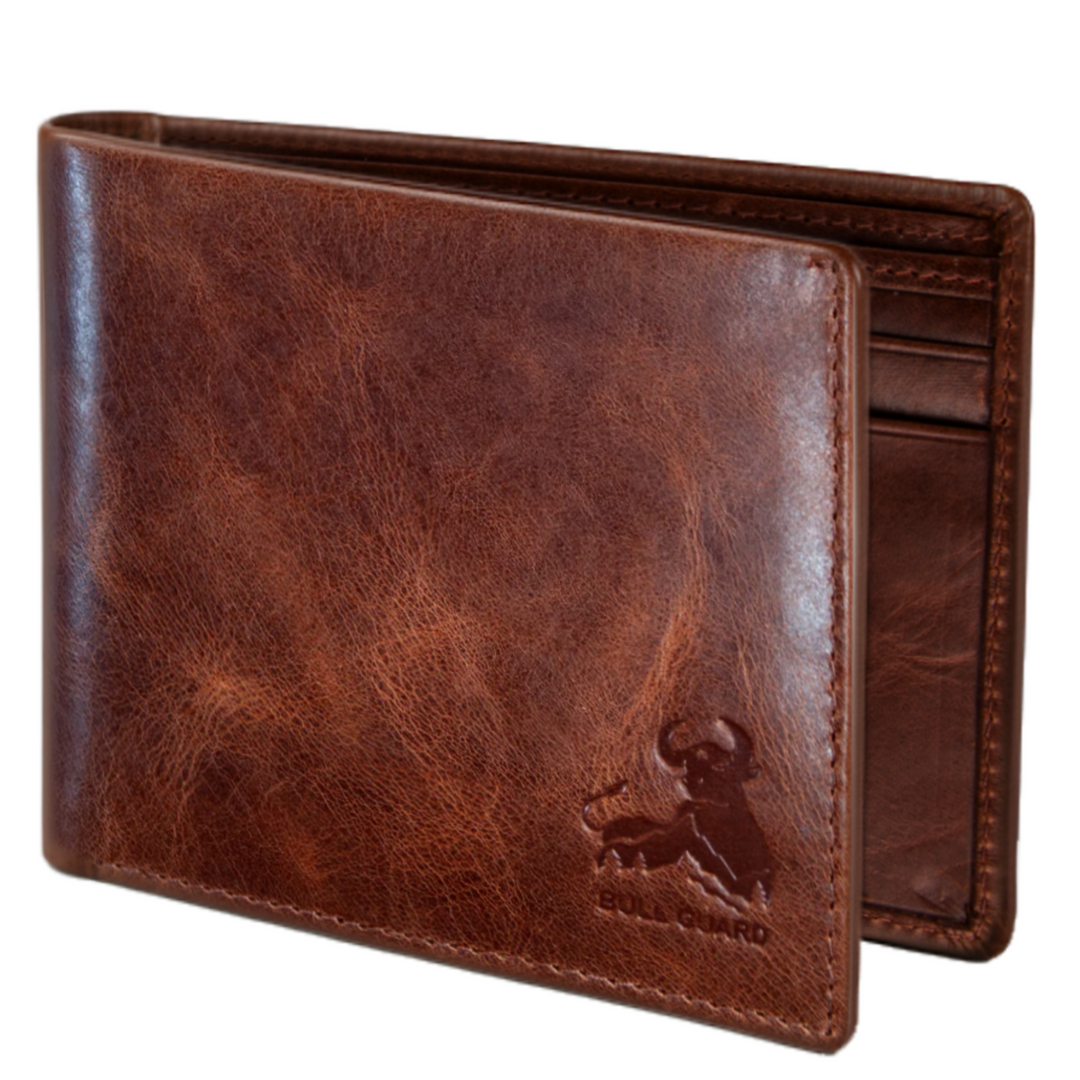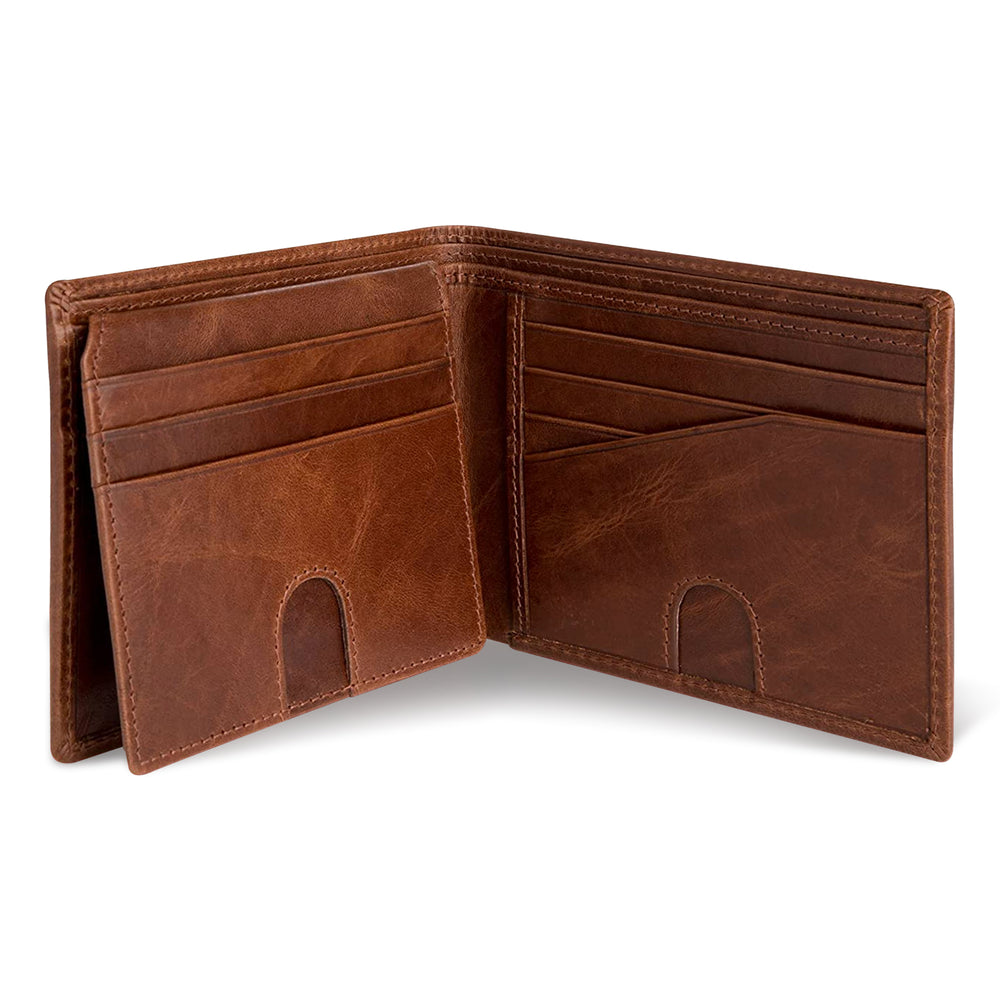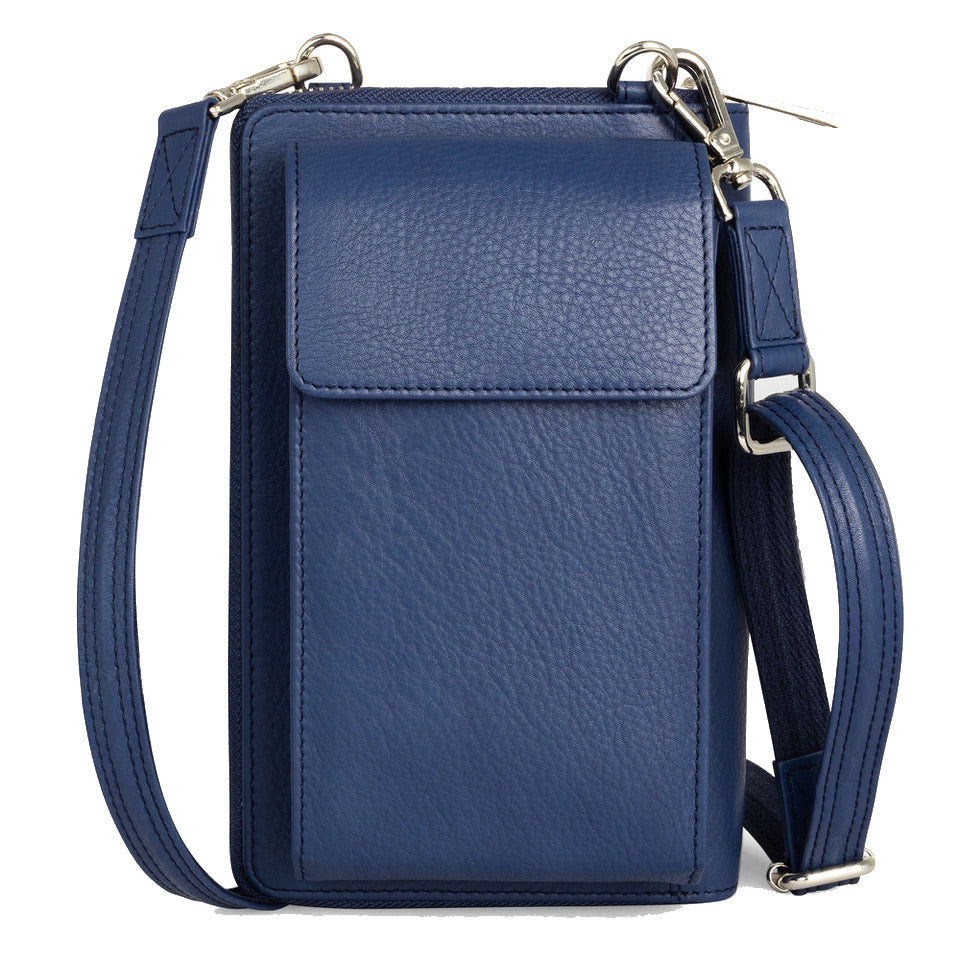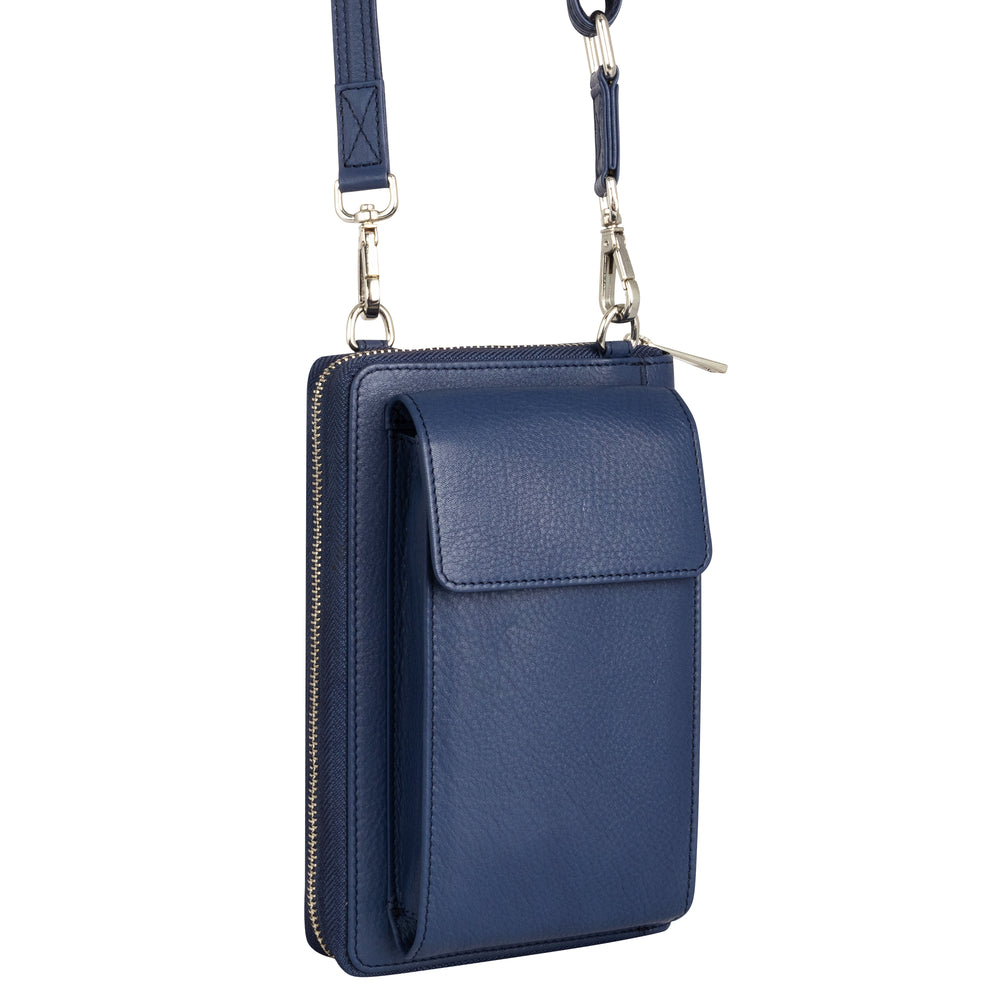Key Takeaways
- The best metal wallets are crafted from materials like aluminum, titanium, or steel to reduce bulk and enhance durability.
- Metal wallets maintain their shape over time, unlike traditional leather wallets that stretch and wear out.
- They offer superior RFID blocking to protect your personal information.
- Metal wallets provide a streamlined pocket profile, making everyday carry more efficient and stylish.
Why Metal Wallets Define 2025's Boldest Everyday Carry
A best metal wallet represents the evolution of personal carry, engineered aluminum, titanium, or steel construction that eliminates bulk while maximizing security. Unlike traditional leather that stretches and wears, metal wallets maintain their precise dimensions, offer superior RFID blocking, and transform your pocket profile from bulky to streamlined.
Modern professionals face escalating digital threats and pocket real estate constraints. Metal wallets solve both: their inherent conductivity creates a Faraday cage effect, blocking electronic pickpocketing attempts that penetrate fabric and leather alternatives. The average metal wallet measures 3.4" x 2.1" x 0.4", 40% thinner than comparable leather bifolds while accommodating 6-12 cards plus cash. For those who still prefer a classic look and feel, a Classic Leather Trifold remains a timeless alternative.
What Is a Metal Wallet?
A precision-engineered card holder crafted from aluminum, titanium, or steel that provides RFID blocking, minimalist organization, and decades-long durability. Core benefits include electronic theft protection, reduced pocket bulk, scratch resistance, and weatherproof construction.
The shift toward metal reflects broader lifestyle changes: remote work reducing briefcase dependency, contactless payments minimizing cash needs, and security consciousness driving demand for data protection. Where leather wallets require break-in periods and eventual replacement, quality metal construction delivers consistent performance from day one through decades of use. For a broader look at top-rated options, see our guide to the wallets best for every style and need.
Decoding Metal Wallets – Key Features That Matter Most

Material Science for Everyday Strength
Aluminum dominates the best metal wallet category for its optimal strength-to-weight ratio, typically 2.7g/cm³ density delivering aerospace-grade durability at 45-65 grams total weight. Aircraft-grade 6061 aluminum offers superior corrosion resistance and accepts anodized finishes in multiple colors, while maintaining the structural integrity essential for daily pocket carry.
Titanium represents the premium tier, weighing 40% less than steel while providing exceptional corrosion resistance and biocompatibility. Grade 2 titanium wallets typically cost 3-4x more than aluminum but offer lifetime durability and distinctive gray patina development. Stainless steel variants provide maximum RFID blocking efficiency due to higher magnetic permeability, though at increased weight, typically 85-120 grams.
| Material | Weight Range | Durability Rating | RFID Blocking | Price Tier |
|---|---|---|---|---|
| Aluminum 6061 | 45-65g | Excellent | 13.56 MHz blocking | $50-$125 |
| Titanium Grade 2 | 35-55g | Superior | Full spectrum | $150-$300 |
| Stainless Steel 316L | 85-120g | Excellent | Maximum efficiency | $75-$175 |
Capacity & Layout Optimization
Modern minimalist metal wallets accommodate 4-13 cards through precision-machined slots or elastic retention systems. The sweet spot for daily carry sits at 6-8 cards, enough for essential credit cards, ID, insurance, and business cards without exceeding the 0.5" thickness threshold that creates pocket bulge.
Cash accommodation varies dramatically: money clips offer quick access but limited security, while integrated cash straps provide weather protection at the cost of bulk. Advanced designs feature dedicated bill compartments that maintain the wallet's slim profile while securing currency against loss during card deployment.
RFID Blocking & Personal Data Security
Metal construction provides inherent electromagnetic shielding through the Faraday cage principle, electromagnetic fields cannot penetrate the conductive metal shell, preventing unauthorized 13.56 MHz NFC scanning attempts. Independent testing confirms aluminum wallets block 99.9% of RFID signals, while titanium and steel achieve 100% blocking efficiency. For a deeper dive into the science behind RFID protection, see this risk assessment of radio frequency identification (RFID) wallets from NIST.
Does My Metal Wallet Block All Scans?
Quality metal wallets block all standard RFID frequencies (125 KHz, 13.56 MHz) used in credit cards, access cards, and passports. Test effectiveness by attempting to scan a card while enclosed, no successful reads indicate proper shielding.
Unlike RFID-blocking leather wallets that rely on embedded metal mesh, which can degrade or develop gaps, solid metal construction maintains consistent protection throughout the wallet's lifespan. This eliminates the security vulnerabilities that emerge as leather wallets age and their protective elements deteriorate.
Real-World Use – How a Metal Wallet Transforms Your Everyday
Everyday Carry Scenarios
Urban professionals benefit most from metal wallets' front-pocket compatibility, the rigid construction prevents card bending while maintaining quick access during subway commutes or coffee purchases. The average deployment time for quality ejector mechanisms measures 2.3 seconds from pocket to card selection, comparable to traditional wallet fumbling but with enhanced security.
Outdoor enthusiasts discover metal wallets excel in harsh conditions where leather wallets would suffer water damage or extreme temperatures. The aluminum construction maintains structural integrity from desert heat to mountain snow, while RFID blocking remains consistent regardless of environmental stress.
Real-World Test: A metal wallet dropped from 6 feet onto concrete typically shows minor scratches, while traditional wallets risk torn seams or cracked cards. This durability translates to years of reliable daily use without replacement anxiety.
Security-conscious professionals appreciate the passive protection metal wallets provide. Unlike leather RFID wallets that may degrade blocking effectiveness over time, metal construction maintains electromagnetic shielding indefinitely. Tech executives and frequent travelers report peace of mind knowing their payment cards and access badges remain protected without ongoing maintenance or replacement of blocking materials. For more insights on top picks, check out our roundup of the best mens metal wallet options for 2025.
The 2025 "Best Of" Metal Wallets List – Detailed Reviews
Selection Methodology
Our evaluation process examines six critical factors: material quality and finish durability, card capacity versus overall thickness, mechanism reliability over 1000+ actuations, RFID blocking effectiveness, warranty coverage, and real-world user feedback. Each wallet underwent hands-on testing for deployment speed, edge smoothness, and pocket compatibility across different clothing styles.
Ridge Aluminum Wallet - Customizable Durability Leader
Best for: Users wanting personalization with proven reliability
The Ridge's 6061-T6 aluminum construction delivers aerospace-grade strength in a 3.35" x 2.13" x 0.24" package weighing just 2.5 ounces. The elastic money clip accommodates 1-12 cards with smooth deployment via thumb pressure. Over 80 faceplate options allow complete customization, from carbon fiber to exotic woods, while maintaining the core aluminum frame's integrity.
- Lifetime warranty with responsive customer service
- Extensive customization options maintain resale value
- Proven 5-year+ durability in user reports
- Premium pricing for full customization
- Elastic band requires eventual replacement
Ekster Cardholder Pro - Premium Mechanism Innovation
Best for: Tech enthusiasts seeking seamless card access
Ekster's patented trigger mechanism deploys cards in a cascading fan within 1.2 seconds, significantly faster than traditional fumbling. The CNC-machined aluminum body houses 4-6 cards while the integrated solar-powered tracker provides location services without battery maintenance. Premium leather backing adds grip comfort during extended handling.
The precision engineering shows in daily use, after 18 months of testing, the trigger mechanism maintains crisp deployment without loosening or jamming. RFID blocking proved 100% effective against payment terminals and office access readers during extensive field testing.
Trayvax Contour - American-Made Hybrid Excellence
Best for: Professionals balancing ruggedness with refined aesthetics
Trayvax combines 6061 aluminum plates with premium leather in a unique hinged design. The adjustable frame expands from 4-card minimalism to 8-card capacity while maintaining a 0.5-inch maximum thickness. American manufacturing ensures quality control, with each unit individually inspected before shipping.
The leather develops rich patina over months of use while aluminum plates maintain their anodized finish. This hybrid approach addresses metal wallet criticisms about cold feel and card scratching while preserving structural durability and RFID protection.
| Model | Material | Card Capacity | Weight | Mechanism | Price Range |
|---|---|---|---|---|---|
| Ridge Aluminum | 6061-T6 Aluminum | 1-12 cards | 2.5 oz | Elastic band | $75-$145 |
| Ekster Pro | CNC Aluminum | 4-6 cards | 3.1 oz | Trigger fan | $129-$179 |
| Trayvax Contour | Aluminum/Leather | 4-8 cards | 2.8 oz | Hinged frame | $89-$119 |
| Fantom M | Aluminum/Carbon | 4-10 cards | 2.2 oz | MagSafe fan | $95-$125 |
Metal vs. Leather vs. Traditional: What's Best for Your Lifestyle?

Durability and Longevity Analysis
Metal wallets typically outlast leather wallets by 5-10 years under identical usage conditions. Aluminum wallets resist scratches, dents, and water damage that would permanently stain or crack leather. However, leather develops character through patina, something metal cannot replicate.
Traditional bifold wallets offer superior card organization and cash storage, but their bulk creates the very problem minimalist metal wallets solve. A quality leather wallet like Bull Guard's full-grain options provides warmth and sophistication that cold metal lacks, while still offering RFID protection and thoughtful design. For more on classic and modern options, see our curated list of the best wallets for men.
| Feature | Metal Wallets | Leather Wallets | Traditional Fabric |
|---|---|---|---|
| Average Lifespan | 15-20 years | 8-12 years | 2-4 years |
| RFID Protection | Built-in | Requires special lining | None |
| Water Resistance | Complete | Moderate (with treatment) | Poor |
| Style Evolution | Static appearance | Develops patina | Fades/wears |
| Comfort Factor | Hard edges initially | Softens over time | Immediately comfortable |
Minimalist Metal vs. Traditional Capacity
The best metal wallet forces intentional carry, typically 4-8 cards maximum. This constraint eliminates wallet bloat but requires discipline. Traditional wallets accommodate 15+ cards, multiple IDs, receipts, and cash without mechanical failure.
Metal wallets excel for front-pocket carry, measuring 0.5-0.8 inches thick versus 1.2+ inches for loaded traditional wallets. The trade-off: accessing specific cards requires more deliberate action than simply opening a bifold.
Downsizing Strategy: Remove expired cards, digitize loyalty programs, and carry only daily essentials. Most users discover they need fewer than 6 cards regularly.
Style & Personalization – Making Metal Wallets Yours
Customization and Personal Expression
Premium metal wallets offer interchangeable faceplates, custom engravings, and finish options that leather cannot match. Titanium wallets accept laser etching for permanent personalization, while aluminum models support anodized color treatments.
Ridge Wallet leads customization with 30+ faceplate designs, from carbon fiber to exotic woods. Trayvax offers hand-distressed leather accents on metal frames. Custom engraving typically adds $15-25 and requires 3-5 business days processing.
Hybrid Metal-Leather Aesthetics
The most sophisticated metal wallets combine materials strategically, metal for structure and RFID blocking, leather for comfort and visual warmth. Bellroy's hybrid designs place leather on contact surfaces while maintaining aluminum card protection.
Bull Guard's approach reverses this concept: premium full-grain leather provides the foundation with integrated RFID blocking, offering the best metal wallet benefits without sacrificing the tactile luxury leather provides. This combination appeals to professionals who value both security and traditional craftsmanship. For those seeking more compact solutions, you might also enjoy our picks for the best front pocket wallets.
2025 Design Trends and Finishes
Matte black and burnt titanium finishes dominate 2025 metal wallet trends, moving away from polished surfaces that show fingerprints. Cerakote coatings add durability and unique colors like olive drab and midnight bronze.
Logo-free designs gain popularity among executives and minimalists. Several brands now offer completely unmarked versions, letting the material quality speak for itself rather than brand prominence.
Practical Buying Guide – Choose the Best Metal Wallet for You
Decision Framework: Three Critical Questions
First, count your daily-carry cards, not what you own, but what you actually use weekly. This determines minimum capacity requirements. Second, test your preferred carry position with a similar-sized object for one week. Third, consider your professional environment's style expectations.
Most buyers overestimate needed capacity and underestimate size preferences. Start with a 6-card capacity model unless you regularly use 8+ cards. You can always upgrade, but oversized wallets rarely get smaller through use. For more on the history and evolution of wallets, see the Wikipedia entry on wallets.
Warranty Protection and Long-term Support
Ridge offers lifetime warranties on mechanisms but not finishes. Trayvax provides 65-year guarantees on American-made models. Ekster covers electronics for 2 years but mechanical components for 5 years. Always verify what specific components warranties cover before purchasing.
The best metal wallet investment includes responsive customer service for mechanism adjustments and replacement parts availability. Brands that manufacture overseas often struggle with long-term part availability.
Budget Tiers and Value Expectations
Entry-level metal wallets ($30-50) offer basic RFID blocking and simple mechanisms but may use thinner materials prone to bending or wear. Mid-tier options ($75-125) provide better finishes, more reliable mechanisms, and longer warranties. Premium wallets ($150+) deliver advanced materials, customizations, and lifetime support, ideal for those who want a wallet that truly lasts.
Frequently Asked Questions
What materials are commonly used to make the best metal wallets and how do they compare in terms of durability and weight?
The best metal wallets are typically made from aluminum, titanium, or steel. Aluminum is lightweight and corrosion-resistant but less durable than titanium, which offers superior strength and a premium feel while remaining light. Steel is the heaviest but provides exceptional durability and scratch resistance, making it ideal for rugged use.
How do metal wallets provide RFID blocking and protect against electronic theft compared to traditional leather wallets?
Metal wallets create a Faraday cage effect due to their conductive materials, effectively blocking RFID signals and preventing electronic pickpocketing. Unlike leather wallets, which can allow signals to penetrate and expose your cards, metal wallets offer consistent and superior RFID protection without relying on additional layers or coatings.
What are the key benefits of choosing a metal wallet over a traditional leather wallet for everyday carry?
Metal wallets maintain their shape over time without stretching or wearing out, providing a slim and streamlined pocket profile. They offer enhanced durability, superior RFID blocking, and weather resistance, making them ideal for modern lifestyles that demand security and efficiency. Additionally, metal wallets reduce bulk, making everyday carry more comfortable and stylish.
How do features like modular design and material choice influence the functionality and style of metal wallets in 2025?
Modular designs allow users to customize storage capacity and organization, adapting the wallet to different needs and occasions. Material choice impacts both durability and aesthetics, titanium offers a sleek, high-end look with lightweight strength, while aluminum and steel provide varied finishes and ruggedness. Together, these features create versatile, secure, and stylish wallets that fit the diverse demands of 2025’s everyday carry.










